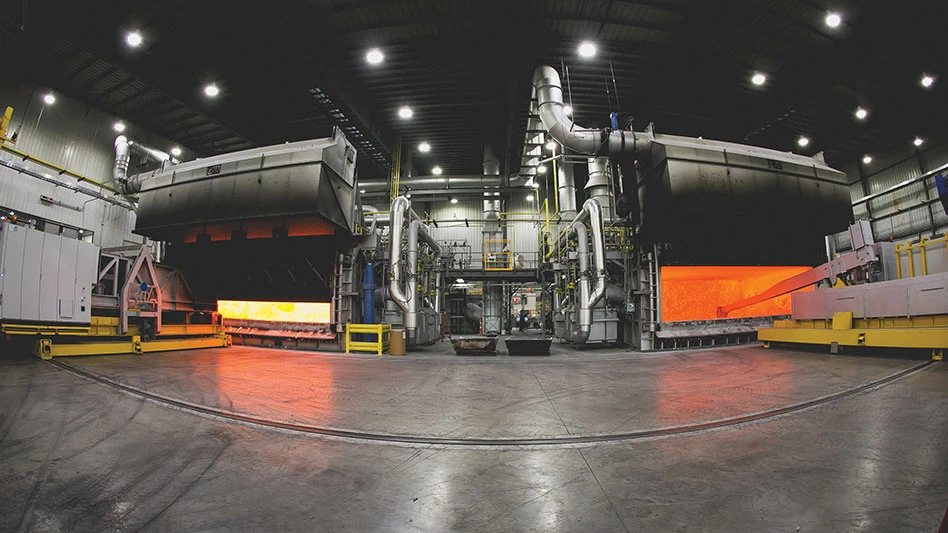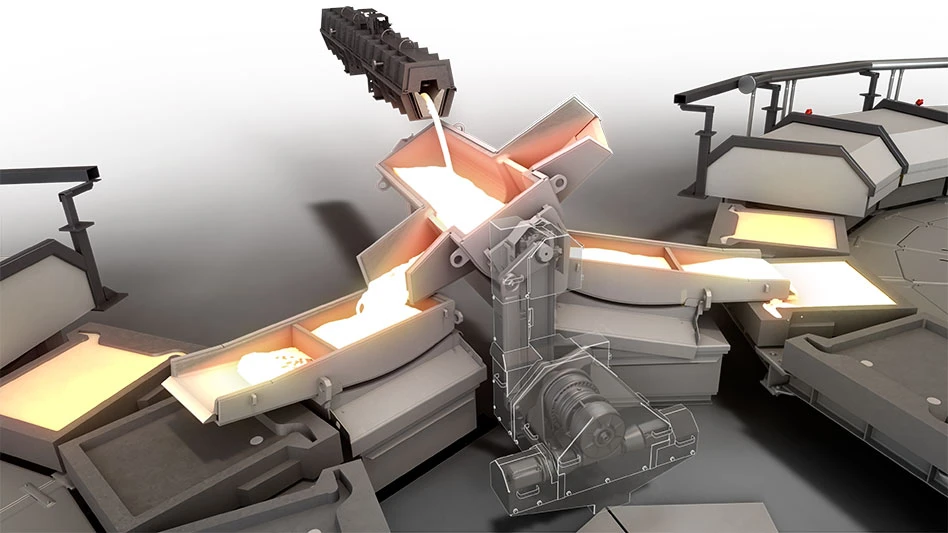
The go-go days when copper demand and price climbed to record highs from the late 1990s until the financial crisis of 2008 are long gone. Even the price spike seen in 2011 is a distant memory for many recyclers who have been dealing with severe scrap supply shortages and prices that are far lower than they were several years ago.
Supporting this bearish sentiment, the aggregate Bloomberg Commodity Index, which tracks a number of commodities including copper, as of last summer had declined by 61 percent from its 2008 peak and by 46 percent from the 2011 postcrisis high.
More recent news about economic stimulus packages being discussed by many countries has solidified global copper pricing and has given some scrap handlers confidence that these fiscal packages could result in stronger demand for copper as an infrastructure play going forward.
A source with the Copper Development Association (CDA), New York, notes that macroeconomic factors are key drivers for the copper market. With the plumbing and electrical sectors comprising a significant portion of end market demand, an uptick in commercial and residential construction will go a long way toward strengthening demand for the metal.
In general, another analyst says, despite these economic opportunities, the domestic copper market appears to be fairly quiet currently. In the U.S., for every positive economic indicator that is reported, a negative indicator seems to provide counterbalance.
Supply shortages continue
With a fairly static domestic market for copper scrap presently, several scrap dealers say the challenge is not so much locking in pricing but obtaining enough material to meet their customers’ needs.
However, because of copper’s history of fairly dramatic price swings, many of the larger scrap metal brokers say they are hedging their inventories.
Other factors that have hobbled a stronger recovery in copper are high inventories at London Metal Exchange (LME) warehouses as well as perceived supplies of copper that are not being reported. Although reports are mixed about the size of the “phantom” stocks being held in China, inventories in LME-monitored warehouses increased by close to 40 percent in early July as metal was delivered into Asian facilities, according to a report from the Bloomberg news service.
Several scrap dealers say the challenge is not so much locking in pricing but obtaining enough material to meet their customers’ needs.
Supporting the less-than-rosy outlook over the second half of this year, Scotiabank, Toronto, in an analysis of its Commodity Price Index dated May 27, 2016, says it expects to see further sluggishness from the metal. “Copper will likely experience continued headwinds through the summer on the back of weaker demand prospects and a sluggish supply response,” Scotiabank further states.
In its analysis, Scotiabank also references information from the global research group Wood Mackenzie, headquartered in Edinburgh, U.K., which notes that more than 750,000 metric tons of annualized copper supply were idled in 2015 in response to low prices.
However, on a more positive note, Scotiabank says Wood Mackenzie expects copper producers to be “more resilient” in 2016 and that curtailments are unlikely to exceed 150,000 metric tons.
The International Copper Study Group (ICSG), Lisbon, Portugal, says it expects copper production to remain at or close to balance for the next year and a half. In a recent report, the ICSG states that after increasing by roughly 1.6 percent in 2015, world refined copper production in 2016 is expected to increase by only 0.5 percent to 23 million metric tons. The growth, however, does carry mixed signals, with primary refined copper production expected to grow by around 3 percent, while the group says it expects secondary production of copper from scrap to decline by 1 percent and solvent extraction-electrowinning output (SX-EW) to decline by 8 percent.
Domestically, secondary copper smelters, brass and bronze ingot makers and copper mills are still buying copper scrap. However, a significant amount of collected scrap needs to be shipped offshore, primarily to China.
Export Market Activity
While China, along with many other developing countries, helped to propel copper to record levels of price and demand during the turn of this century because of what some analysts called the “commodity super cycle,” more recently it appears this frenzy of buying has ebbed.
However, that is not to say China does not remain in the driver’s seat when it comes to copper. “Far and away China continues to be the driver for all things copper,” one scrap exporter says. He estimates that half of all the copper scrap collected in the United States is shipped to China.
With this in mind, exporters continue to be challenged. According to the ICSG, recycled copper use in China dropped to 2.5 million metric tons—1.8 million metric tons of refined scrap and 700,000 metric tons of direct-melt scrap.
More concerning for scrap dealers shipping to China is the fact that the country is importing far less copper scrap than in has the past. According to the ICSG, China’s net copper scrap imports by gross weight dropped from more than 4 million metric tons in 2013 to less than 3.2 million metric tons last year. According to field reports and discussions with several shippers of copper scrap to China, that trend could continue for the next few years.
It’s not necessarily a slowing Chinese economy or reduced demand for copper within China causing the decline in copper scrap imports. Carlos Risopatron, ICSG director of economics and environment, says copper mine production has increased in China, resulting in lower copper concentrate prices that make it less attractive for Chinese consumers to import and use recycled copper to fabricate copper products. As a result, the copper recycling industry has been suffering in recent years.

“This year we experienced a small recovery in refined copper prices, followed by slightly better prices for recycled copper, but not enough to bet for a strong recovery of the copper recycling industry,” Risopatron says.
Lower pricing also is making it less attractive to recover scrap generated within China currently. “That’s why I mention a shortage only at the smelters level paying low prices but not at the fabricator level, where cheaper refined copper is preferred to scrap,” Risopatron says.
According to a recent report in China Copper Weekly, with domestic scrap pricing in China being lower than that for overseas material, little incentive is present for the country to aggressively import copper scrap from overseas.
Sponsored Content
Still relying on manual sorters?
Let AI do the heavy lifting. Waste Robotics delivers reliable, high-performance robots tailored for complex waste streams. They require minimal maintenance, are easy to operate, and are designed to boost your recovery rates. Smarter sorting starts with the right partner. Waste Expo Booth #1969 & REMA #2843
Click here to see our robots in action!A slowdown in substitution
One area that has generated concern within the copper sector has been the possibility that some end markets will opt to use materials other than copper in their finished products. This fear seemed to be most common a number of years ago, when copper topped $4 per pound.
However, Risopatron says that while miniaturization and substitution reduced copper use by approximately 300,000 metric tons in 2014 and by roughly 270,000 metric tons in 2015, this amounts to only about 2 percent of total global refined copper consumption. Additionally, the rate of copper substitution has slowed recently in light of lower prices for the metal.
As the rate of copper substitution has declined, so have incidences of copper theft.
A scrap processer based in the Midwest says, “The only good thing that I have seen with copper lately is it seems like scrap metal thefts have quieted down quite a bit.” He adds, “A few years ago we were reporting on thefts about every day. Now, we can go several weeks without a call about some stolen material.”
While copper appears yet to have to struggle with a number of short-term challenges and it may never again reach the high prices seen in the first decade of the 2000s, some market analysts appear to believe that an improving global economy could result in a more robust pickup in demand for copper, perhaps as early as next year.
Get curated news on YOUR industry.
Enter your email to receive our newsletters.

Explore the August 2016 Issue
Check out more from this issue and find your next story to read.
Latest from Recycling Today
- Fenix Parts acquires Assured Auto Parts
- PTR appoints new VP of independent hauler sales
- Updated: Grede to close Alabama foundry
- Leadpoint VP of recycling retires
- Study looks at potential impact of chemical recycling on global plastic pollution
- Foreign Pollution Fee Act addresses unfair trade practices of nonmarket economies
- GFL opens new MRF in Edmonton, Alberta
- MTM Critical Metals secures supply agreement with Dynamic Lifecycle Innovations








